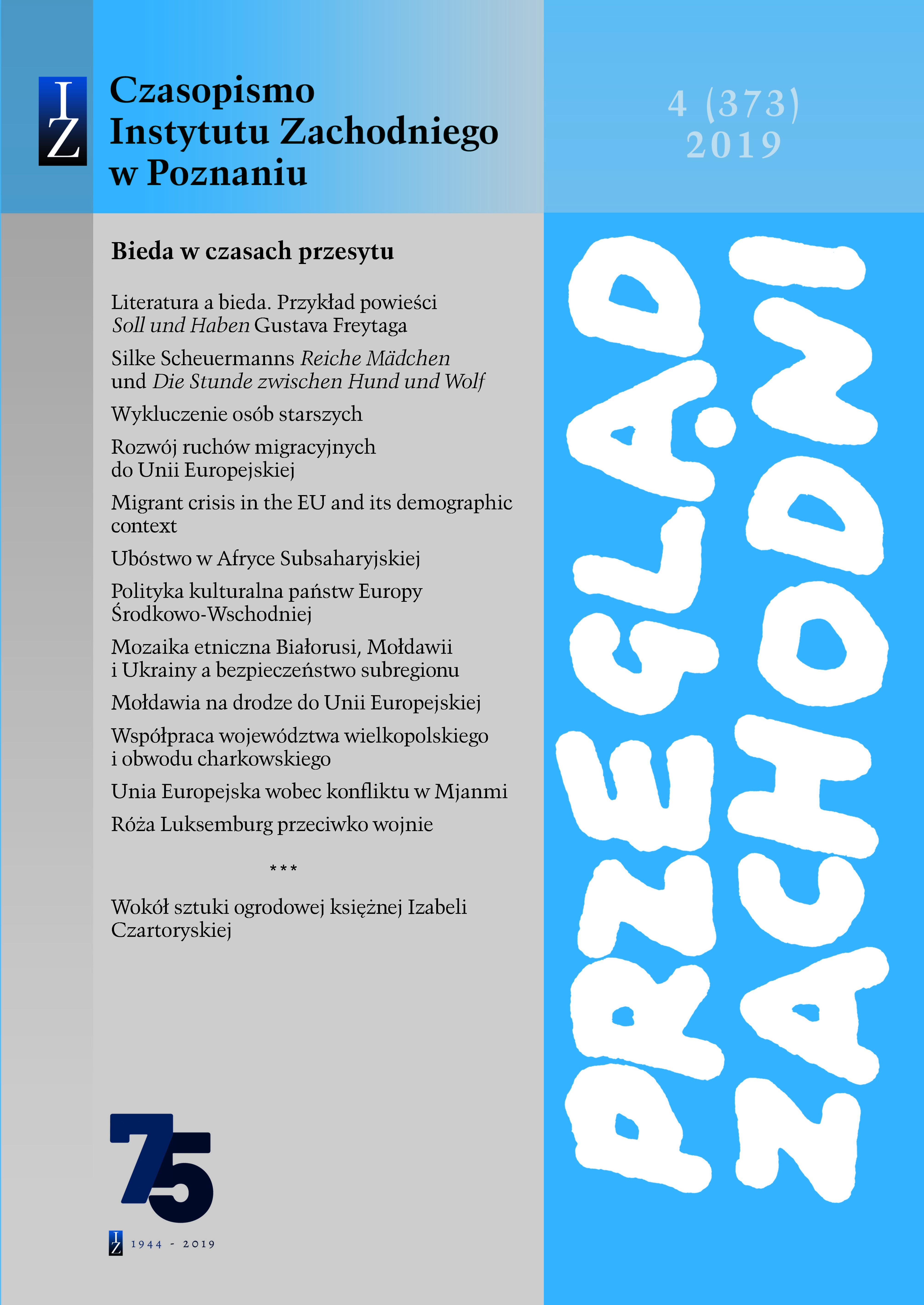Migrant crisis in the EU and its demographic context. Directions of Poland’s migration policy after 2018
Migrant crisis in the EU and its demographic context. Directions of Poland’s migration policy after 2018
Author(s): Grzegorz ZbińkowskiSubject(s): Migration Studies
Published by: Instytut Zachodni im. Zygmunta Wojciechowskiego
Keywords: EU migrant crisis; directions of Poland’s migration policy; population; death rate; fertility rate; emigration; migration; migration balance; Frontex; labour deficit
Summary/Abstract: The objectives of this paper are: (i) presentation of theoretical aspects of migration and migrant crisis in the EU in 2015 (its causes, the Vysehrad Group’s position on the issue and the status of the relocation process, including the arrangements on strengthening the role and enhancing operating capacity of Frontex); (ii) comparative analysis of selected demographic indicators for individual EU countries (including Poland) / EU-28 in the context of the migrant crisis: fertility rate, mother’s mean age at first birth, death rate and population in 1998−2018 together with the population forecast until 2049; (iii) discussion of the following data for Poland: emigration-immigration migration balance in 2006−2017 and labour deficit; (iv) presentation of Poland’s migration policy (its formal aspects, threats and opportunities, directions). The research objective is an answer to the question of what the causes were of the 2015 migrant crisis and steps taken by the EU in this scope; and what directions Poland’s migration policy should take. The analysis assumes the following research hypothesis: “a failure to introduce and implement a deliberate, multiyear migration policy, addressing the existing and future challenges will result in Poland’s population decreasing by 3.44 million in 2019−2049”. The hypothesis was verified through presenting Eurostat’s forecasts with the simultaneous definition of required directions of Poland’s migration policy after 2018, that is: (i) deceleration of the decrease rate for Poland’s population through: increase in the replacement rate, reduction of the death rate (to at most the EU-28 average) and decrease in mother’s mean age at first birth; (ii) striving to obtain a positive migration balance (with emigration reduction prioritised); (iii) support for remigration; (iv) preventing illegal immigration;(v) implementation of simple mechanisms and procedures for employing foreigners in Poland, with resulting reduction of labour deficit; (vi) integration of foreigners. The hypothesis has been verified to be true. The following research methods were applied: the historical method (origin, progress, meaning), content analysis (research into documents), as well as the quantitative and qualitative method (numeric data analysis.
Journal: Przegląd Zachodni
- Issue Year: 373/2019
- Issue No: 04
- Page Range: 91-106
- Page Count: 16
- Language: English

